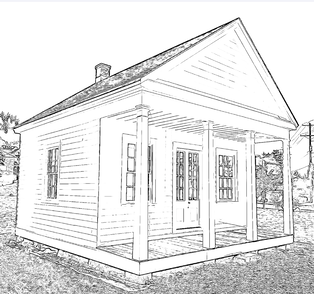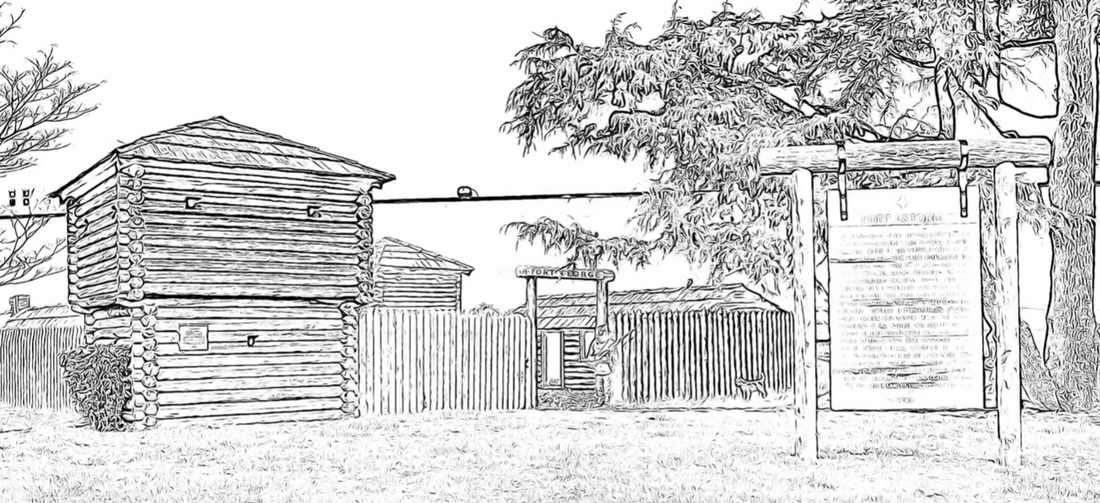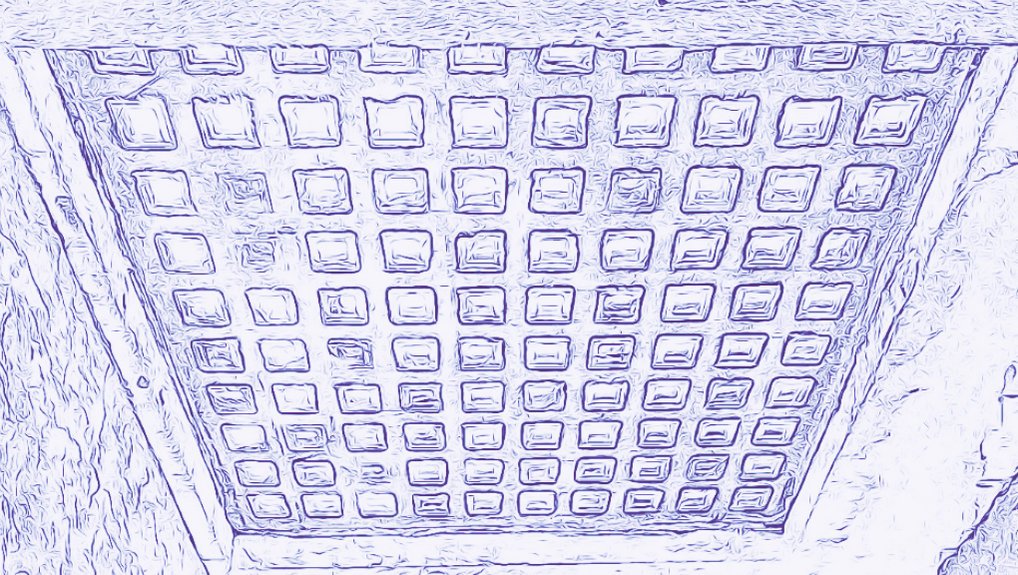1. Visit Fort Astoria Park
Upon their arrival in 1811, the Astor Party constructed a fur-trading post at this location. Over time, houses, streets, and parking lots obscured the original fort's footprint. In 1948, the local community fought to set aside this tiny corner of the original site as a public park space. In 1956, a fort bastion was added, and in 1961, the area was designated a National Historic Landmark. A new interpretive sign, similar in appearance to one placed here in 1948, was installed in 2022. Check out the back of the sign for more information and admire the mural by local artist Roger McKay
This park is located at the corner of 15th and Exchange Streets behind Fort George Brewery + Public House
Learn about the history of the park and the new sign here:
https://www.lcpsociety.org/fortastoriasign
Upon their arrival in 1811, the Astor Party constructed a fur-trading post at this location. Over time, houses, streets, and parking lots obscured the original fort's footprint. In 1948, the local community fought to set aside this tiny corner of the original site as a public park space. In 1956, a fort bastion was added, and in 1961, the area was designated a National Historic Landmark. A new interpretive sign, similar in appearance to one placed here in 1948, was installed in 2022. Check out the back of the sign for more information and admire the mural by local artist Roger McKay
This park is located at the corner of 15th and Exchange Streets behind Fort George Brewery + Public House
Learn about the history of the park and the new sign here:
https://www.lcpsociety.org/fortastoriasign
2. Admire the beautifully restored Astoria Column
1 Coxcomb Drive
Designed by New York architect Electus Litchfield and decorated with Attilio Pusterla's sgraffito mural, this monument was completed in 1926. Astoria had begun envisioning a towering memorial at the summit of Coxcomb Hill before Astoria's Centennial in 1911. Still, it took the interest and effort of Ralph Budd of the Great Northern Railway and funds donated by Vincent Astor to complete the task. The column has undergone several touch-ups, reinforcements, and restorations over the years, well documented on the Friends of Astoria Column website astoriacolumn.org. A parking pass costs $5 per year.
1 Coxcomb Drive
Designed by New York architect Electus Litchfield and decorated with Attilio Pusterla's sgraffito mural, this monument was completed in 1926. Astoria had begun envisioning a towering memorial at the summit of Coxcomb Hill before Astoria's Centennial in 1911. Still, it took the interest and effort of Ralph Budd of the Great Northern Railway and funds donated by Vincent Astor to complete the task. The column has undergone several touch-ups, reinforcements, and restorations over the years, well documented on the Friends of Astoria Column website astoriacolumn.org. A parking pass costs $5 per year.
3. Try out a self-guided tour
Learn about the downtown fire that destroyed 31 blocks of Astoria’s business district in 1922. Start at the point of origin and visit several buildings that survived the great conflagration. Pick up a brochure at the LCPS office at the corner of 12th and Duane Streets (389 12th St.). For an accessible online version of the tour, visit our website: lcpsociety.org/1922fire
Learn about the downtown fire that destroyed 31 blocks of Astoria’s business district in 1922. Start at the point of origin and visit several buildings that survived the great conflagration. Pick up a brochure at the LCPS office at the corner of 12th and Duane Streets (389 12th St.). For an accessible online version of the tour, visit our website: lcpsociety.org/1922fire
4. Observe the purple sidewalk vault lights
Observe the purple glass tiles you walk upon while strolling Commercial and Duane Street sidewalks. Most of these glass prisms were installed during the post-fire rebuild of 1923 and 1924. Their purpose was to illuminate the basements and below-street utility areas. Colorless when installed, their purple shade results from a chemical reaction to the solar light from the sun. Learn more by listening to LCPS's Restoria Podcast: lcpsociety.org/podcast
Observe the purple glass tiles you walk upon while strolling Commercial and Duane Street sidewalks. Most of these glass prisms were installed during the post-fire rebuild of 1923 and 1924. Their purpose was to illuminate the basements and below-street utility areas. Colorless when installed, their purple shade results from a chemical reaction to the solar light from the sun. Learn more by listening to LCPS's Restoria Podcast: lcpsociety.org/podcast
5. Explore the Shively-McClure National Register Historic District and view historic architecture
Listed on the National Register in 2005, the Shively-McClure Historic District encompasses over 200 contributing historic structures built during the neighborhood's period of significance from 1846-1939. The boundary for this district spans north to south from Franklin Avenue to Lexington Avenue and west to east from 9th Street to 18th Street. The district is stylistically diverse, with styles ranging from Gothic vernacular to Craftsman, including high-style Queen Anne Victorian and Colonial Revival.
Learn more about the district here!
Listed on the National Register in 2005, the Shively-McClure Historic District encompasses over 200 contributing historic structures built during the neighborhood's period of significance from 1846-1939. The boundary for this district spans north to south from Franklin Avenue to Lexington Avenue and west to east from 9th Street to 18th Street. The district is stylistically diverse, with styles ranging from Gothic vernacular to Craftsman, including high-style Queen Anne Victorian and Colonial Revival.
Learn more about the district here!
6. Enjoy a meal in a historic building
Astoria has ample culinary choices, and many of our local restaurants utilize the character of historic buildings to enhance your experience. Examples include Fort George Brewery + Public House as well as Blue Scorcher Bakery & Cafe (both in the Fort Gorge Building, built 1924); Carruthers Restuarant (Associated Building, 1923), Silver Salmon Grille (Fisher Building, 1924), Curry & CoCo (Gimre and Svensen Building, 1924); The Green Door Cafe (Oddfellows Building, 1924); and others.
Astoria has ample culinary choices, and many of our local restaurants utilize the character of historic buildings to enhance your experience. Examples include Fort George Brewery + Public House as well as Blue Scorcher Bakery & Cafe (both in the Fort Gorge Building, built 1924); Carruthers Restuarant (Associated Building, 1923), Silver Salmon Grille (Fisher Building, 1924), Curry & CoCo (Gimre and Svensen Building, 1924); The Green Door Cafe (Oddfellows Building, 1924); and others.
7. Book a night at a historic hotel
Extend your vacation or treat yourself to a staycation if you live nearby. Astoria has several options for historic lodging, depending on your style. Try the classy and classic Hotel Elliott (1924), get a room at the trendy Norblad (1924) or Selena (1924), or try the new Bowline Hotel, which adapted an Astoria warehouse and fish packing building into a boutique waterfront experience. Many B&Bs and homestay lodgings also pepper our historic neighborhoods.
Extend your vacation or treat yourself to a staycation if you live nearby. Astoria has several options for historic lodging, depending on your style. Try the classy and classic Hotel Elliott (1924), get a room at the trendy Norblad (1924) or Selena (1924), or try the new Bowline Hotel, which adapted an Astoria warehouse and fish packing building into a boutique waterfront experience. Many B&Bs and homestay lodgings also pepper our historic neighborhoods.


